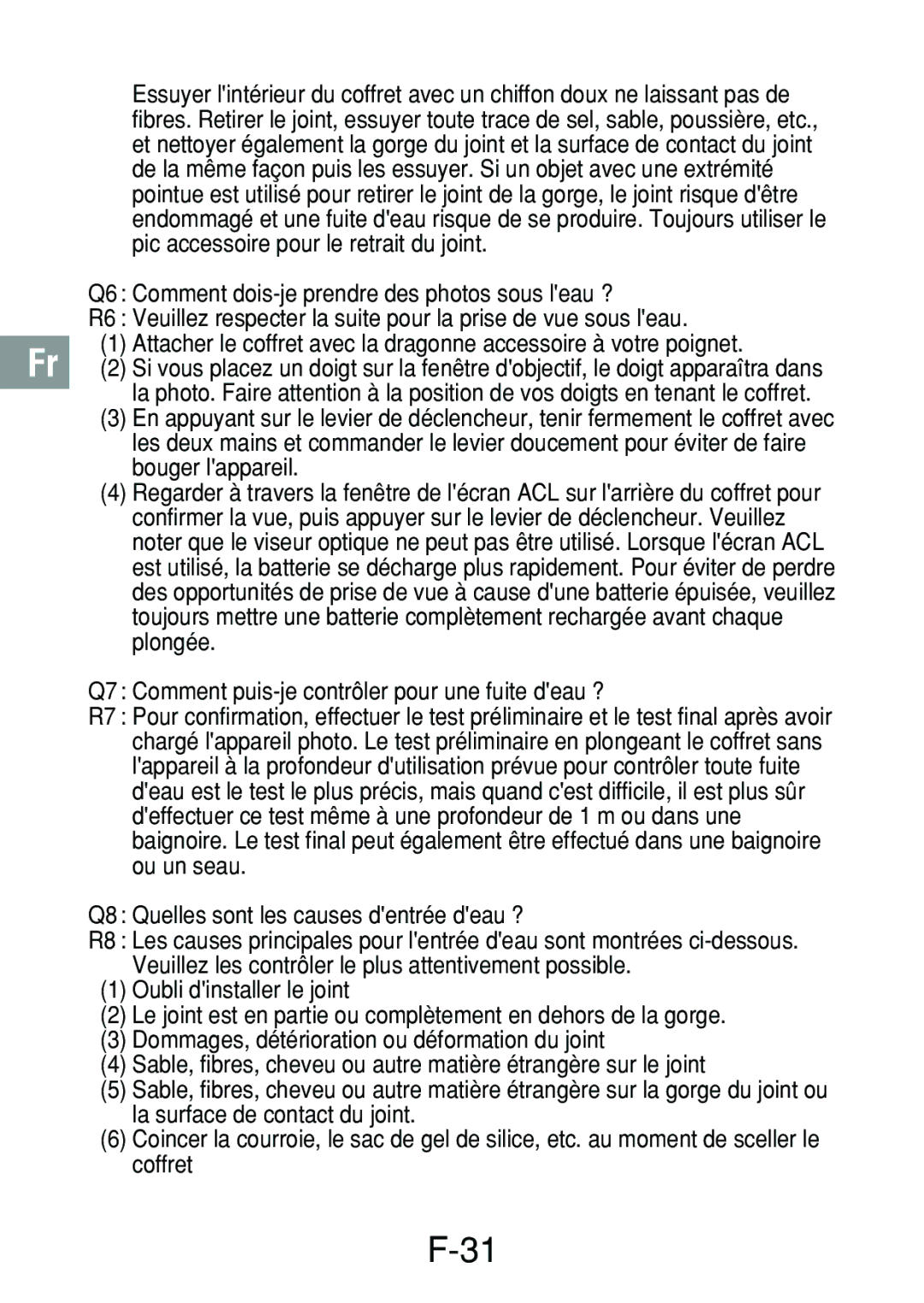PT-018 specifications
The Olympus PT-018 is a well-regarded underwater housing designed specifically for the Olympus digital cameras, providing enthusiasts and professionals alike with the ability to capture stunning images and videos beneath the waves. This product represents a merging of innovative technology and practical design, allowing users to explore the underwater world without sacrificing the performance of their camera.One of the standout features of the PT-018 is its robust construction, designed to withstand the pressures associated with underwater photography. The housing can accommodate depths of up to 40 meters, making it suitable for recreational diving and snorkeling. Crafted from durable materials, the housing is both lightweight and rugged, providing peace of mind that the camera is safe and secure while capturing aquatic adventures.
The housing is designed with user accessibility in mind. It features a clear, optical viewfinder that brings clarity to composition and framing even in challenging lighting conditions underwater. Controls for the camera are intuitively placed, allowing for easy adjustments while submerged. The well-placed buttons and dials ensure that photographers can operate their cameras without needing to remove the housing, which is crucial for capturing spontaneous moments.
A significant technological advantage of the PT-018 is its ability to support various wide-angle and macro lens attachments, providing users with a range of creative options for their photography. This adaptability allows photographers to experiment with different perspectives and techniques, from expansive underwater landscapes to intimate close-up shots of marine life.
Additionally, the housing is designed to prevent water ingress, featuring O-rings and seals that help maintain the integrity of the equipment even in challenging conditions. The transparent polycarbonate construction provides excellent visibility while minimizing weight, making it easier to handle during underwater excursions.
The PT-018 also incorporates practical features such as a tripod socket, making it convenient to mount the housing on a tripod or stabilizer for added stability during capture. The housing also includes a lens port that accommodates different filters which can enhance image quality by adjusting for color temperature and reducing backscatter.
In summary, the Olympus PT-018 is a versatile and reliable underwater housing, perfect for those looking to immerse themselves in the art of underwater photography. With its durable construction, intuitive controls, and compatibility with various lenses, it empowers users to capture breathtaking imagery that showcases the beauty of aquatic environments. Whether you're a seasoned diver or a casual snorkeler, the PT-018 enables you to explore and immortalize the wonders found beneath the surface.
